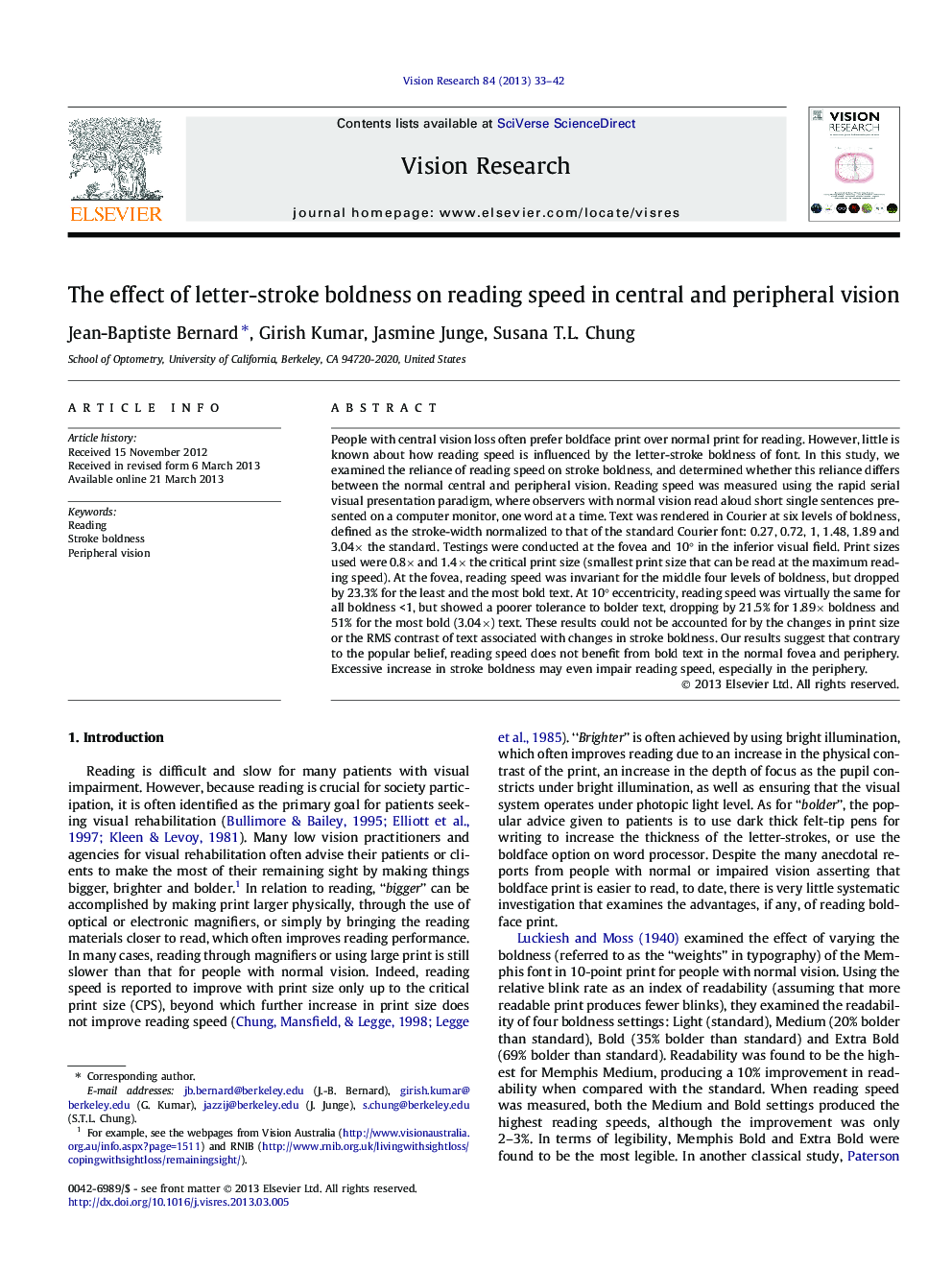| Article ID | Journal | Published Year | Pages | File Type |
|---|---|---|---|---|
| 4033824 | Vision Research | 2013 | 10 Pages |
•Reading speed measured for Courier fonts rendered at six levels of letter-stroke boldness.•Reading speed was never higher for bolder print than for the standard Courier.•Foveal reading was slower for the least and the most bold print than the standard.•Peripheral reading showed a higher tolerance to print with thin letter strokes.•Peripheral reading showed less of a tolerance to print bolder than standard.
People with central vision loss often prefer boldface print over normal print for reading. However, little is known about how reading speed is influenced by the letter-stroke boldness of font. In this study, we examined the reliance of reading speed on stroke boldness, and determined whether this reliance differs between the normal central and peripheral vision. Reading speed was measured using the rapid serial visual presentation paradigm, where observers with normal vision read aloud short single sentences presented on a computer monitor, one word at a time. Text was rendered in Courier at six levels of boldness, defined as the stroke-width normalized to that of the standard Courier font: 0.27, 0.72, 1, 1.48, 1.89 and 3.04× the standard. Testings were conducted at the fovea and 10° in the inferior visual field. Print sizes used were 0.8× and 1.4× the critical print size (smallest print size that can be read at the maximum reading speed). At the fovea, reading speed was invariant for the middle four levels of boldness, but dropped by 23.3% for the least and the most bold text. At 10° eccentricity, reading speed was virtually the same for all boldness <1, but showed a poorer tolerance to bolder text, dropping by 21.5% for 1.89× boldness and 51% for the most bold (3.04×) text. These results could not be accounted for by the changes in print size or the RMS contrast of text associated with changes in stroke boldness. Our results suggest that contrary to the popular belief, reading speed does not benefit from bold text in the normal fovea and periphery. Excessive increase in stroke boldness may even impair reading speed, especially in the periphery.
